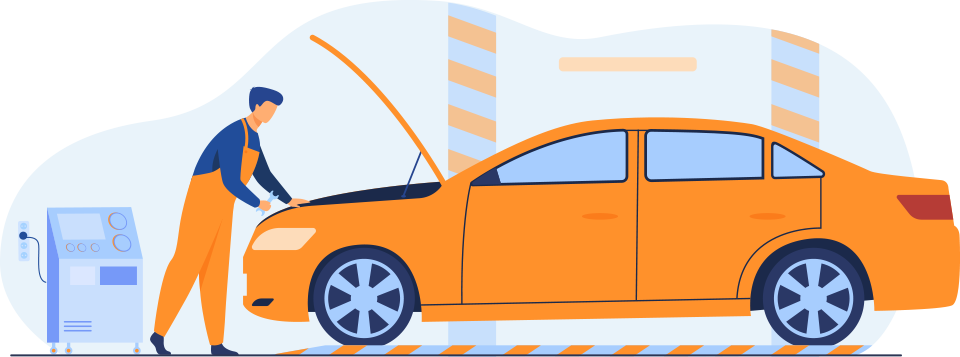Inboard Motor Components Explained: A Complete Guide
Inboard motors are essential for many boat types, providing reliable power and precise propulsion. In this guide, we’ll break down each major component of an inboard motor, their functions, and essential maintenance tips to keep them in top shape. Whether you’re new to inboard motors or a seasoned boater, this guide will help you understand what makes these engines run.
Table of Contents
- Engine Block
- Cylinder Head
- Camshaft and Crankshaft
- Pistons and Connecting Rods
- Fuel System
- Exhaust System
- Cooling System
- Lubrication System
- Transmission System
- Electrical System
- Common Inboard Motor Problems and Solutions
1. Engine Block
The engine block is the central component where fuel combustion generates power to move the boat. Usually made of cast iron or aluminum, the engine block houses the cylinders, pistons, and crankshaft.
- Maintenance Tips: Regularly change the engine oil and check coolant levels to prevent overheating.
- Image Placement: Insert a detailed labeled image of the engine block.
- Internal Link Suggestion: Link to your article on [basic engine maintenance] for a full maintenance checklist.
2. Cylinder Head
The cylinder head sits on top of the engine block, sealing the cylinders and holding intake and exhaust valves.
- Function: Controls air and fuel intake and exhaust gas release.
- Common Issues: Overheating can warp the cylinder head; regular coolant checks are essential.
- Video Placement: Embed a short video explaining the function of valves and how they operate in the cylinder head.
- External Link Suggestion: Link to a trusted source, such as BoatUS or West Marine, for more on cylinder head maintenance.
3. Camshaft and Crankshaft
- Camshaft: Controls the timing of the opening and closing of valves.
- Crankshaft: Converts the pistons’ linear motion into rotational motion, which powers the propeller.
- Image Placement: Diagram showing the camshaft, crankshaft, and pistons working in unison.
- Tip: Ensure synchronization between the camshaft and crankshaft for optimal performance.
4. Pistons and Connecting Rods
Pistons and connecting rods work together to transfer energy from fuel combustion to the crankshaft.
- Maintenance: Listen for knocking sounds, which can indicate piston or connecting rod issues.
- Image Placement: Include a detailed cross-section of a piston within a cylinder.
5. Fuel System
A boat’s fuel system includes the fuel tank, pump, injectors, and lines. Proper fuel flow is essential for effective combustion.
- Function: The system ensures an optimal fuel mix reaches the engine for smooth running.
- Maintenance: Replace fuel filters regularly to avoid clogging, which can lead to stalling.
- Video Placement: A tutorial video on inspecting and changing fuel filters can add value here.
6. Exhaust System
The exhaust system safely removes gases from the engine and minimizes noise.
- Components: Exhaust manifold, hoses, and muffler.
- Maintenance Tip: Inspect hoses for cracks, which could cause exhaust leaks.
- External Link Suggestion: Link to EPA resources on marine exhaust systems and environmental compliance.
7. Cooling System
The cooling system prevents the engine from overheating, often using raw water from the surroundings.
- Components: Water pump, heat exchanger, thermostat.
- Maintenance: Check for leaks or corrosion that might impact water flow.
- Image Placement: Diagram showing water flow through the cooling system.
- Internal Link Suggestion: Link to a related post on [preventing engine overheating].
8. Lubrication System
The lubrication system minimizes friction and protects moving parts, extending engine life.
- Components: Oil pump, filter, oil pan.
- Maintenance: Regularly change the oil and clean the oil filter to keep the engine in peak condition.
- Video Placement: A step-by-step guide on changing oil in an inboard motor.
9. Transmission System
The transmission system transfers power from the engine to the propeller, enabling forward and reverse movement.
- Components: Gearbox, driveshaft, propeller shaft.
- Tip: Check fluid levels regularly to prevent slippage.
- Image Placement: Include a diagram to illustrate how the transmission connects to the propeller.
10. Electrical System
The electrical system powers the starter motor, alternator, and other electronics.
- Components: Battery, alternator, starter motor.
- Maintenance: Clean battery terminals and regularly check voltage.
- Video Suggestion: A tutorial on checking and cleaning battery terminals.
Common Inboard Motor Problems and Solutions
- Overheating
- Symptoms: High temperature readings, steam, or warning alarms.
- Solution: Ensure water intakes aren’t blocked, and check thermostat functionality.
- Engine Misfires
- Symptoms: Rough idling, loss of power.
- Solution: Replace worn-out spark plugs and clean fuel injectors.
- Battery Issues
- Symptoms: Difficulty starting, dimmed lights.
- Solution: Clean terminals, replace battery if necessary, and test the alternator.
Additional Tips for Inboard Motor Maintenance
- Seasonal Maintenance: Conduct thorough engine checks before and after boating season.
- Winterization: Properly winterize inboard motors to prevent freezing damage.
- Preventive Care: Follow a maintenance schedule to prevent costly repairs down the line.
Video Suggestion: Include a walkthrough on seasonal and winterization practices.
Resources for Inboard Motor Owners
- Marine Industry Websites: Reputable sites like BoatUS or MarineMax offer expert advice and tips on engine maintenance.
- Internal Links: Link to other inboard motor guides on your site, like “How to Winterize Your Boat Engine” or “Common Engine Troubleshooting Tips.”
Conclusion
Inboard motors are complex but highly reliable engines when properly maintained. Understanding each component and its function can help you spot potential issues early, save on repair costs, and extend the life of your motor. With the right care and attention, your inboard motor will keep your boating adventures smooth and trouble-free.
By following this guide and applying regular maintenance practices, you’ll gain confidence in maintaining your motor, ensuring safe and enjoyable boating experiences.
External Link Suggestion: Link to BoatUS or a reputable marine parts retailer to offer readers a place for replacement parts.








